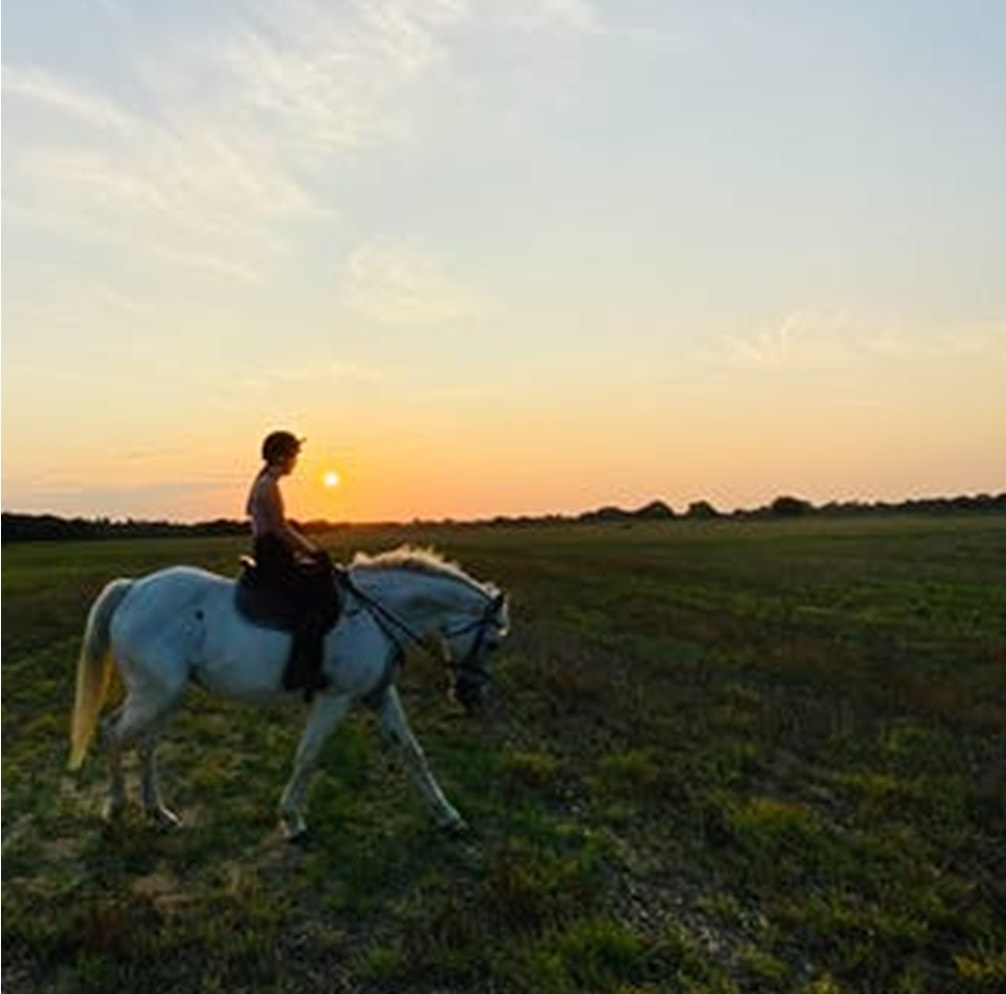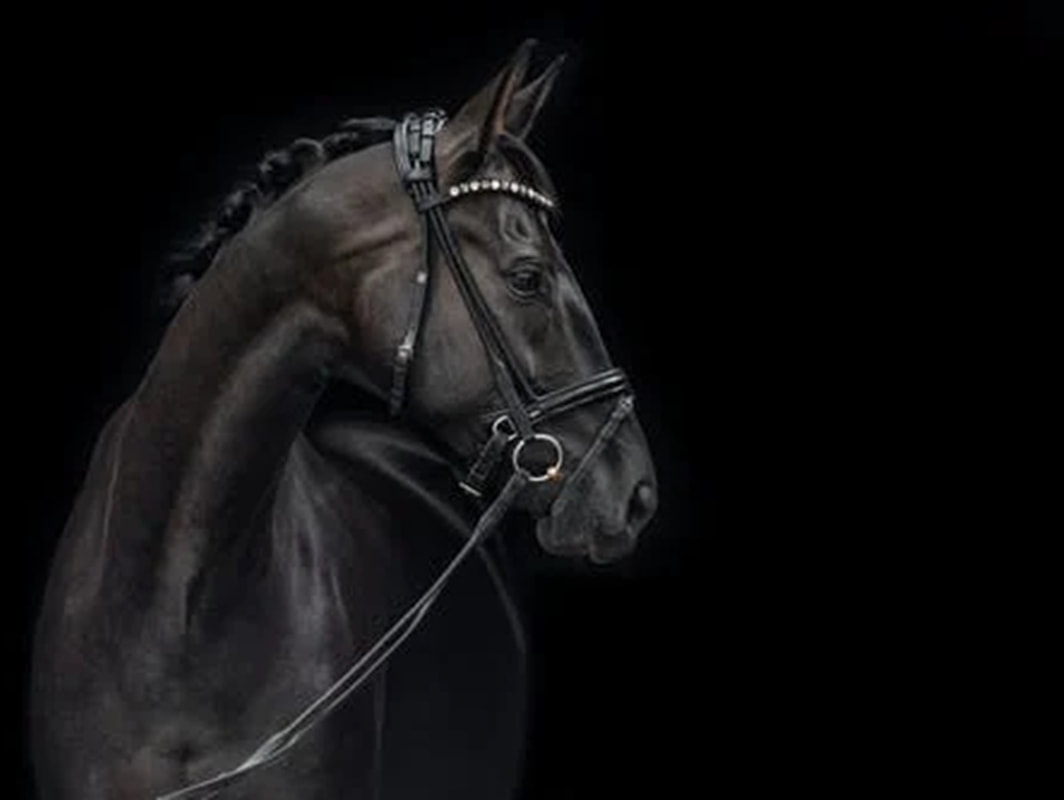What to Do When you Hit a Plateau
For those of you who desire a medal, whether for Equitation, Basic Dressage or higher, you need to be the crème de la crème of riders. These medalists are not just riders but are equestrian athletes. They are physically fit and have strong core muscles. They do not just ride horses, but are also involved in other physically demanding activities, such as jogging, swimming or bicycling.
Equestrian athletes excel in a one day show with ease and without complaint. They look forward to more difficult tasks and challenges. Riding is not just merely sitting the horse’s back, but a constant strive to always become better. There are no excuses for any short-comings or mistakes. They look to their own riding skills before accounting the horse. There is no blaming the horse for any weakness found in the rider. Rather, the equestrian athlete works even harder to overcome these obstacles. Through dedicated practice, the equestrian athlete strives for perfection.
He or she rides with discipline and with pleasure, without having to constantly be reminded, encouraged, bribed or forced! Lessons are maximum opportunities to learn new things and perfect old things. They have no time to repeat the same mistakes over and over.
The equestrian athlete does not have a negative attitude or a closed mind, as that will impede progression. Frustration is turned around into focus and direction.
The equestrian athlete puts the horse first at all times. He or she should be able to answer all horsemanship questions. If not, the equestrian athlete will seek to find the answers and know them for next time, as this knowledge is critical in every aspect of horse care as well as riding.
The equestrian athlete is an inspiration and a role model for others to follow. There is not only a great respect for the equestrian athlete, but also a great respect from the athlete. He or she is respectful to everyone around them, all animals, tack and attire.
The equestrian athlete works hard and wants to be the best he or she possible can be and are grateful for the effort that goes into horse care and riding, as well as into events and programs.
The equestrian athlete appreciates the help from others, whether parents, friends, comrades and workers. He or she is grateful for the commitment and devotion from coaches and trainers alike.
The equestrian athlete needs your respect, support and enthusiasm for celebrating in the equestrian world. Without this there would be no equestrian athletes.
Equestrian athletes excel in a one day show with ease and without complaint. They look forward to more difficult tasks and challenges. Riding is not just merely sitting the horse’s back, but a constant strive to always become better. There are no excuses for any short-comings or mistakes. They look to their own riding skills before accounting the horse. There is no blaming the horse for any weakness found in the rider. Rather, the equestrian athlete works even harder to overcome these obstacles. Through dedicated practice, the equestrian athlete strives for perfection.
He or she rides with discipline and with pleasure, without having to constantly be reminded, encouraged, bribed or forced! Lessons are maximum opportunities to learn new things and perfect old things. They have no time to repeat the same mistakes over and over.
The equestrian athlete does not have a negative attitude or a closed mind, as that will impede progression. Frustration is turned around into focus and direction.
The equestrian athlete puts the horse first at all times. He or she should be able to answer all horsemanship questions. If not, the equestrian athlete will seek to find the answers and know them for next time, as this knowledge is critical in every aspect of horse care as well as riding.
The equestrian athlete is an inspiration and a role model for others to follow. There is not only a great respect for the equestrian athlete, but also a great respect from the athlete. He or she is respectful to everyone around them, all animals, tack and attire.
The equestrian athlete works hard and wants to be the best he or she possible can be and are grateful for the effort that goes into horse care and riding, as well as into events and programs.
The equestrian athlete appreciates the help from others, whether parents, friends, comrades and workers. He or she is grateful for the commitment and devotion from coaches and trainers alike.
The equestrian athlete needs your respect, support and enthusiasm for celebrating in the equestrian world. Without this there would be no equestrian athletes.
It is not uncommon for some horses and riders to hit a certain level of training where it seems like they cannot progress. This happens to a lot of horse and rider combinations. Sometimes the rider will need to further their education and take some riding lessons with more advanced coaches/instructors. Sometimes it is the horse who just needs a little more time to mature and blend into the progressional program. In some cases horses hit their ceiling and cannot physically or mentally perform any higher than their last achievement. It may not mean the end of their career rather that they have hit the level that they find to be difficult.
As long as both the horse and the rider are enjoying their time together then nothing is wrong. That is what horsemanship is all about- enjoying the sport! The biggest concern is to not give up. The rider needs to be confident in the level they are riding for show or events, then he can school a level higher at home until that level becomes more solid. There is nothing wrong with riding a certain level for many years, after all only two percent of all horses make it into the Grand Prix level. As well, do not expect smooth sailing because every time you move up a stage or a level you will find new difficulties to try and overcome. It will become more complex with many factors interdependent on each other. This may lead to confusion for a while but that is not a bad thing, instead it is a learning experience. Sometimes confusion can feel bad, but it merely means that there is a new concept that one is not familiar with and needs to step outside of his comfort zone in order to tackle the problem head on. Enjoy all of these steps and stages that promote your riding towards your end goal.
Dressage is not just a sport but it also is an art and takes many years to perfect if one is ever so lucky as to be able to say that. Dressage also involves careful analytical thinking and consists of science. That is what makes it so intriguing.
Just as every horse is different, so is every rider. Some riders need to focus and become assiduous while other riders need to relax and take the efforts in stride. Sometimes doing less is more.
It is important to keep trying and practicing, riding with careful consideration and calculations, while enjoying surges of progression but also enjoying the practices in between those moments of clarity, understanding and evolution. In fact, most of our deepest thoughts of understanding and learning are done during these in-between stages of the levels.
If it is resistance that is holding the horse back, that simply means that the horse’s musculature system has a weak spot. The only way to overcome the lack of muscle tone is to keep practicing and never give up, even if it takes the horse’s entire lifetime to produce.
As long as both the horse and the rider are enjoying their time together then nothing is wrong. That is what horsemanship is all about- enjoying the sport! The biggest concern is to not give up. The rider needs to be confident in the level they are riding for show or events, then he can school a level higher at home until that level becomes more solid. There is nothing wrong with riding a certain level for many years, after all only two percent of all horses make it into the Grand Prix level. As well, do not expect smooth sailing because every time you move up a stage or a level you will find new difficulties to try and overcome. It will become more complex with many factors interdependent on each other. This may lead to confusion for a while but that is not a bad thing, instead it is a learning experience. Sometimes confusion can feel bad, but it merely means that there is a new concept that one is not familiar with and needs to step outside of his comfort zone in order to tackle the problem head on. Enjoy all of these steps and stages that promote your riding towards your end goal.
Dressage is not just a sport but it also is an art and takes many years to perfect if one is ever so lucky as to be able to say that. Dressage also involves careful analytical thinking and consists of science. That is what makes it so intriguing.
Just as every horse is different, so is every rider. Some riders need to focus and become assiduous while other riders need to relax and take the efforts in stride. Sometimes doing less is more.
It is important to keep trying and practicing, riding with careful consideration and calculations, while enjoying surges of progression but also enjoying the practices in between those moments of clarity, understanding and evolution. In fact, most of our deepest thoughts of understanding and learning are done during these in-between stages of the levels.
If it is resistance that is holding the horse back, that simply means that the horse’s musculature system has a weak spot. The only way to overcome the lack of muscle tone is to keep practicing and never give up, even if it takes the horse’s entire lifetime to produce.






